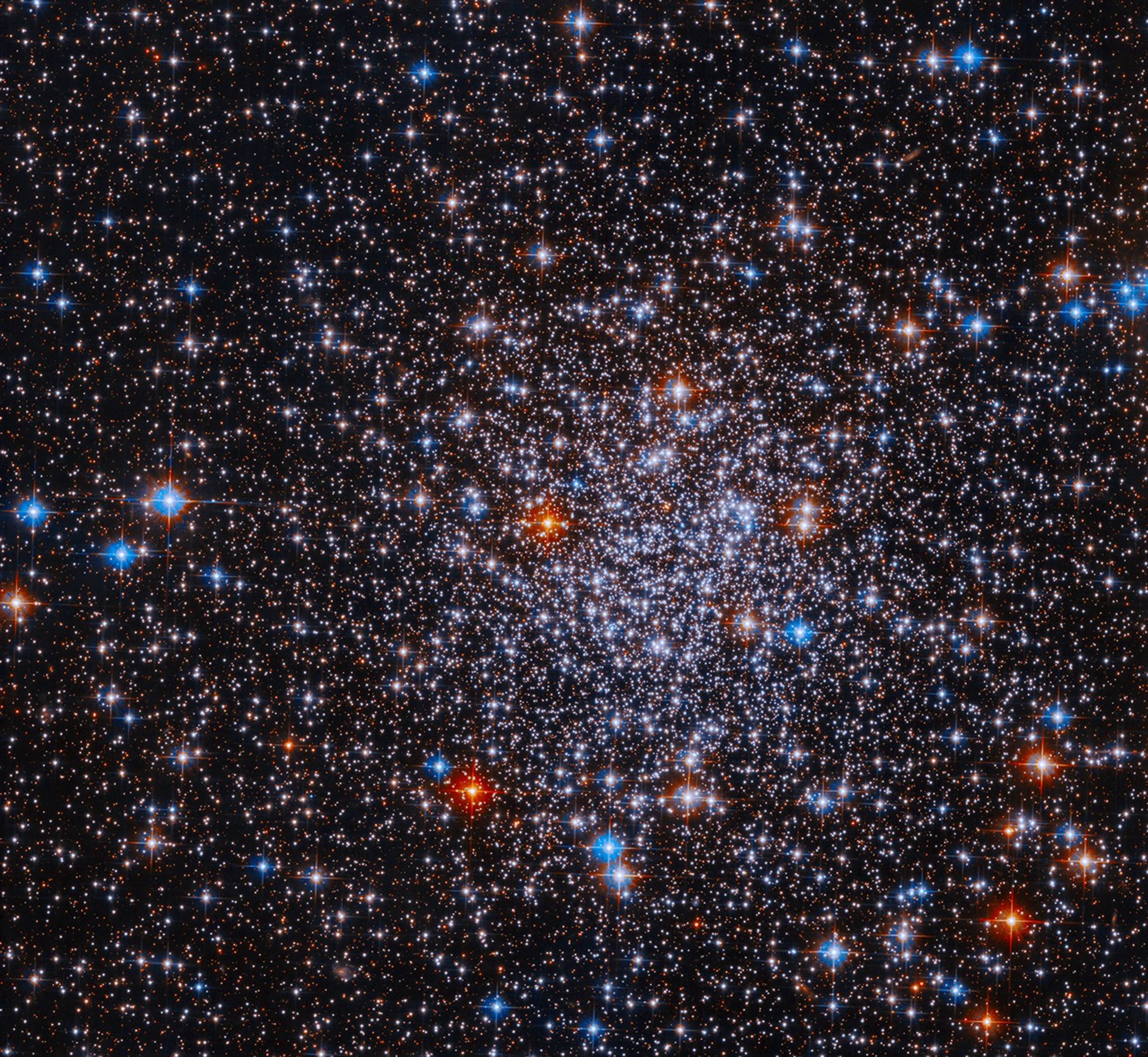In recognition of the NASA Hubble Space Telescope's 30 years of civilization-changing astronomical discoveries, the Smithsonian National Air and Space Museum (NASM) in Washington, D.C., has awarded its 2020 Collins Trophy for Current Achievement to the Hubble operations team at the Space Telescope Science Institute (STScI) in Baltimore and NASA's Goddard Space Flight Center in Greenbelt, Maryland.
In giving the award, the museum lauded the Hubble team’s achievements in keeping the venerable telescope a highly productive and scientifically viable space observatory. Over 30 years, the team's collective efforts have made Hubble history's most scientifically viable and celebrated telescope.
"Through the efforts of the Hubble team the observatory has continued to produce research unachievable with any other instrument. System engineers in Hubble’s control center and science operations facility have continued to find creative ways to operate the 30-year-old spacecraft to make this revolutionary science possible and ensuring its capabilities will continue for years to come," reports NASM.
“During its 30 years in space, Hubble has brought the universe down to Earth for all of humankind to explore. Hubble excites the imagination, inspires the soul, and teaches us that there is still much to learn about our place in the cosmos,” said STScI Director Ken Sembach. “Hubble's success would not have been possible without the close linkage of science and NASA's human exploration program, so the awarding of the Collins Trophy is especially meaningful. Hubble and Apollo are both superb examples of teamwork at its finest. It is an honor for the Space Telescope Science Institute and our employees to be an integral part of the Hubble Team, and it is with deep appreciation and great joy that we thank NASM for this recognition.”

“The incredible images and groundbreaking science achievements of Hubble are possible only because of this extraordinary operations team of engineers, managers, technical experts and support scientists working tirelessly behind the scenes," said NASA Goddard Senior Hubble Project Scientist Jennifer Wiseman. "Every snapshot and spectrum of a planet, stellar nebula or distant galaxy is achieved because of this attentive and intertwined oversight of telescope hardware, control software, science instruments and data management. This team is keeping humanity’s premiere “eye on the sky” — Hubble — in fantastic shape for profound scientific discoveries.”
Hubble was originally planned to operate through 2005. However, five astronaut space shuttle servicing missions to Hubble, from 1993 to 2009, continued to upgrade the telescope with advanced instruments, new electronics and on-orbit repairs.
The Hubble operations team, consisting of engineers and scientists at NASA Goddard and STScI, is the backbone behind keeping the observatory viable between these space tune-ups, and tackling day-to-day operational challenges that are common with such a complex science facility remotely controlled in space.
“The Hubble operations team continues to rise to the challenges presented to them, developing innovative long-term measures to ensure this national asset continues to unlock secrets of our universe,” said Greg Goulet, Lockheed Martin Hubble Project Engineering Manager at NASA Goddard. “The team has used its broad range of experience to keep the spacecraft and its instruments operating at a high level for the future. Our vision is to keep Hubble operating at its peak scientific productivity for many more years.”
The ingenuity and dedication of Hubble's staff drive its success in two critical ways: first, they overcome the ongoing impacts of the harsh space environment, and second, they ensure Hubble continues to be a unique and powerful asset for tackling our most pressing mysteries in the next decade,” said Tom Brown, STScI Hubble mission head.
Servicing thousands of astronomers worldwide with science planning, scheduling and archiving, the team's efforts have yielded to date 1.4 million observations and provided data that astronomers have used to write more than 17,000 peer-reviewed scientific publications on a broad range of topics: from solar system investigation, to characterizing exoplanets, to probing galaxy evolution throughout 97% of the lifetime of the observable universe.
"Hubble has changed humans’ fundamental understanding of the universe," the NASM award cites.
Hubble’s jaw-dropping iconic images are a visual shorthand for Hubble’s achievements. A true trailblazer, Hubble has made astronomy very relevant, engaging and accessible for people of all ages.
NASM awards this trophy to recognize achievements involving the management or execution of a scientific or technological project, a distinguished career of service in air and space technology, or a significant contribution in chronicling the history of air and space technology. The award was established in 1985 as the National Air and Space Museum Trophy, but renamed in 2020 in honor of Michael Collins, the Apollo 11 astronaut who flew the command module around the Moon while Neil Armstrong and Buzz Aldrin walked on the surface.
For more information about Hubble, visit: www.nasa.gov/hubble or http://www.stsci.edu/hst.
Claire Andreoli / Rob Gutro
NASA's Goddard Space Flight Center, Greenbelt, Md.
301-286-1940 / 301-286-4044
claire.andreoli@nasa.gov / robert.j.gutro@nasa.gov
Ray Villard
Space Telescope Science Institute, Baltimore
410-338-4514
villard@stsci.edu































